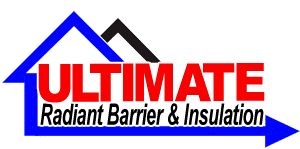Understanding Spray Foam Insulation
Spray Foam Insulation
Spray foam is a chemical product created by two materials, isocyanate and polyol resin, which react when mixed with each other and expand up to 30-60 times its liquid volume after it is sprayed in place. This expansion makes it useful as a specialty packing material which forms to the shape of the product being packaged and produces a high thermal insulating value with virtually no air infiltration.
Thermal Resistance
R-value is the term given relating thermal resistance to heat flow. The higher the R-value of an insulation product, the more effective the insulation properties. Spray polyurethane foam comes in a range of densities and cell structure. Low density foams are referred to as open cell SPF while higher density foams are referred to as closed cell foam. 1.8-2 lb polyurethane foam has the highest R-value of readily available spray foam insulation used in homes and buildings.
Polyurethane is a closed-cell foam insulation material that initially contains a low-conductivity gas in its cells. As a result of the high thermal resistance of the gas, spray polyurethane insulation typically has an initial R-value around R-3.4 to R-6.7 per inch. In comparison, glass wool typically has an R-Value of only R-3 to R-4 per inch.
Foam Insulation Blocks All Three Forms of Heat Transfer:
Conductive Heat Transfer
The flow of thermal energy through a substance from a higher to a lower temperature region. Foam thermoset plastics reduce conductive heat transfer due in part to having very loose molecular bonds; In addition the cells of the installed spray foam are either filled with air in the case of open cell foam or HFC’s (365mfc, 227ea, 245fa) or H(C)FO’s (1336mzz(Z)), 1233zd(E)) in closed cell foam.
Radiant Heat Transfer
The process by which heat energy in the form of light (usually IR unless the substrate is hot enough to glow in the visible range) is emitted more strongly by warm surfaces and absorbed by other materials especially those of low IR reflectivity (think matte black finish). Radiant heat transfer does not require a medium. Foam insulation materials, such as spray foam insulation, are opaque to thermal radiation, like most solid materials.
Convective Heat Transfer
Heat which is created elsewhere that is transported by means of a fluid, such as water or in our case air. Spray foam insulation’s most important attribute is the ability to air-seal creating a custom airtight envelope within the building structure. The added benefit to air-sealing is the ability to block convective heat transfer from interior to exterior during heating months and vice versa during cooling months, as the heat cannot escape through gaps in the buildings envelope without the aid of air movement from infiltration as a means of transport.
Proper Installation of Spray Foam:
It is necessary to have your Spray foam installed by a Trained Professional. Improper or incorrect application of spray foam materials have been known to cause and contribute to a multitude of medical conditions; including headaches, rashes, and breathing issues. Always use a licensed and trained specialist to apply your Spray Foam Insulation, such as an Ultimate Radiant Barrier trained technician.

